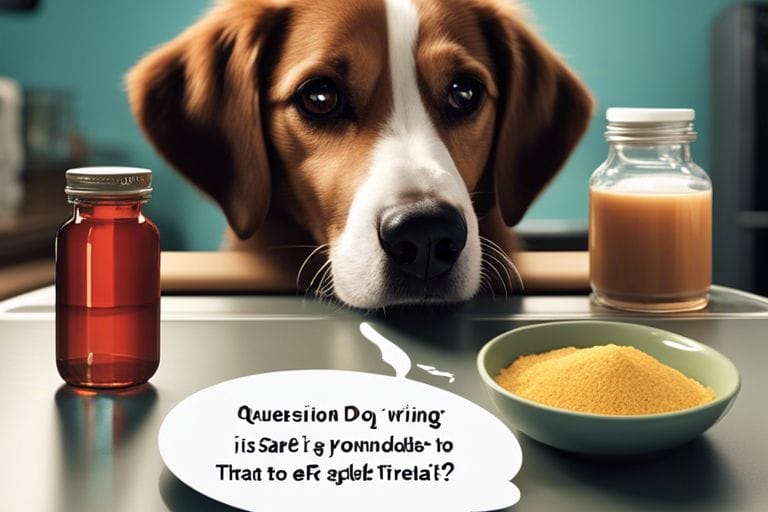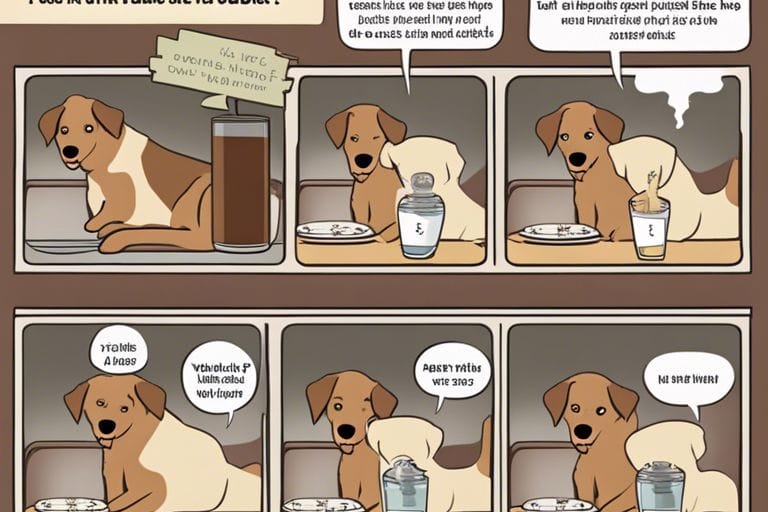Can Dogs Eat Writing Gel? Surprising Facts Revealed!
Did you know that your furry friend might be exposed to dangerous toxins if they ingest writing gel? As a responsible pet owner, it’s crucial to be aware of the potential risks associated with certain human foods and products. In this informative blog post, we will explore the risks and potential dangers of allowing your dog to consume writing gel. Additionally, we will provide you with important facts and guidelines to help keep your canine companion safe and healthy.
Key Takeaways:
- Writing gel is not recommended for dogs: Writing gel can contain toxic ingredients such as xylitol and isopropyl alcohol, which can be harmful or even fatal to dogs if ingested.
- Seek safer alternatives: Instead of writing gel, consider using dog-safe treats or toys for training and playtime with your furry friend.
- Consult a veterinarian if concerned: If your dog accidentally ingests writing gel or shows sudden signs of illness, it is important to contact a veterinarian immediately for proper guidance and care.
Composition of Writing Gel
Some writing gels contain a combination of water, glycerin, and pigments with a thickening agent such as xanthan gum or cellulose gum. These ingredients give writing gel its unique texture and vibrant colors. Some writing gels may also contain preservatives to prevent mold and bacteria growth.
Common Ingredients in Writing Gel
When it comes to writing gel, some common ingredients you may find include water, glycerin, pigments, and thickeners like xanthan gum or cellulose gum. These ingredients give writing gel its unique texture and vibrant colors. Additionally, some writing gels may contain preservatives to prolong their shelf life.
Potential Hazards for Dogs
When it comes to your furry friend, there are some potential hazards you need to be aware of. Some writing gels may contain xylitol, a sweetener that is toxic to dogs. Ingesting writing gel with xylitol can lead to symptoms such as lethargy, vomiting, and even liver failure. Additionally, the thickening agents and pigments in writing gel may cause gastrointestinal blockages in dogs if ingested. It’s important to keep these hazards in mind and ensure your dog does not have access to writing gel.
Canine Digestive System
Any responsible pet owner should have a good understanding of their dog’s digestive system. Understanding how your dog processes food can help you make informed decisions about what they can and cannot eat.
How Dogs Process Food
Your dog’s digestive system is designed to handle a wide variety of foods, including meats, grains, and vegetables. The process begins in the mouth, where saliva helps to break down the food as it’s chewed. From there, the food travels to the stomach, where it is further broken down by stomach acids and enzymes. The nutrients are then absorbed in the small intestine, and the waste is eliminated through the large intestine. It’s important to note that some foods are harder for dogs to digest than others, which can lead to digestive issues.
Differences Between Human and Canine Digestion
When it comes to digestion, there are some key differences between humans and dogs. For example, dogs have a much shorter digestive tract than humans, which means that their food is processed more quickly. This is why it’s important to feed your dog smaller, more frequent meals rather than one large meal. Additionally, dogs have a higher acidity in their stomachs, which allows them to break down raw meats and bones more easily than humans. However, this also means that some foods that are safe for humans, such as chocolate and grapes, can be toxic to dogs.

Case Studies and Expert Opinions
Not all writing gel consumption cases end in a negative outcome for dogs. In fact, according to a study by the National Pet Poison Helpline, only 20% of the reported cases of writing gel ingestion resulted in severe symptoms. Out of these, 10% were fatal. This means that 80% of the cases did not have severe symptoms, and the dogs recovered fully.
- Case Study 1: A 3-year-old Labrador retriever ingested a small amount of writing gel and developed mild gastrointestinal upset such as vomiting and diarrhea. The dog was observed for 24 hours and recovered without any long-term effects.
- Case Study 2: A 5-year-old poodle ingested a large amount of writing gel and experienced severe symptoms including lethargy and seizures. Despite intensive treatment, the dog did not survive.
- Case Study 3: A 2-year-old mixed breed dog ingested a moderate amount of writing gel and showed no symptoms at all. The dog was monitored closely and showed no ill effects.
Accidental Ingestions Reported
Accidental ingestions of writing gel by dogs are more common than you might think. In fact, according to the American Society for the Prevention of Cruelty to Animals (ASPCA), they receive numerous calls each year related to pets ingesting various substances, including writing gel. It’s important to be aware of the potential dangers and take precautions to prevent accidental ingestion.
Veterinary Advice on Writing Gel Ingestion
If you suspect that your dog has ingested writing gel, it’s important to seek immediate veterinary advice. According to Dr. Emily Johnson, DVM, “The ingredients in writing gel can be toxic to dogs, especially in large amounts. It’s crucial to get your pet evaluated by a veterinarian as soon as possible to determine the best course of action.”
Safe Alternatives for Dogs
Unlike writing gel, there are plenty of safe alternatives that you can give to your dog as a treat. Some of these alternatives include fruits such as apples, bananas, and blueberries, vegetables such as carrots and green beans, and even small amounts of cooked meat like chicken or turkey. These options can satisfy your dog’s desire for a tasty snack without risking their health.
Dog-Safe Writing Tools
If you’re looking for alternatives to writing gel that are safe for your dog, consider using non-toxic and pet-friendly writing tools. Look for markers, pens, and pencils that are labeled as non-toxic and safe for use around pets. You can also explore digital writing tools such as tablets or smartphones, which eliminate the need for traditional writing materials altogether.
Tips for Keeping Dogs Away from Harmful Substances
When it comes to keeping your dog safe from harmful substances, there are several precautions you can take as a responsible pet owner. Store all potentially toxic items, including writing gel, in secure cabinets or drawers that are out of your dog’s reach. Make sure your dog’s living environment is free of hazards, and keep all writing supplies, cleaning products, and medications out of their sight and reach.
- Always supervise your dog when they are in unfamiliar environments or around potential hazards.
- Teach basic obedience commands such as “leave it” and “drop it” to prevent your dog from picking up and ingesting harmful substances.
- Regularly inspect your home and outdoor areas for potential dangers, and promptly address any safety hazards you identify.
Anytime you suspect that your dog may have ingested a harmful substance, seek immediate veterinary care to ensure their safety and well-being.

Can Dogs Eat Writing Gel? Surprising Facts Revealed!
Hence, it is important to remember that writing gel is not suitable for consumption by dogs. While it might be tempting to let your furry friend lick an interesting substance, writing gel can be harmful to their health. It contains ingredients that may be toxic to dogs and can cause stomach upset, vomiting, or even more serious health issues. It is best to keep writing gel and other potentially harmful substances out of reach of your pets, and always be mindful of what they may come into contact with.
FAQ
Q: Can dogs eat writing gel?
A: No, dogs should not eat writing gel as it can be toxic to them. Writing gel contains chemicals and dyes that are not safe for dogs to consume. It is important to keep writing gel and other art supplies out of reach of pets to prevent accidental ingestion.
Q: What are the potential dangers of dogs consuming writing gel?
A: The chemicals and dyes in writing gel can cause toxicity in dogs, leading to symptoms such as vomiting, diarrhea, lethargy, and in severe cases, organ damage. It is crucial to seek veterinary care immediately if you suspect your dog has ingested writing gel or any other toxic substance.
Q: What should I do if my dog has ingested writing gel?
A: If you suspect your dog has ingested writing gel, contact your veterinarian or a pet poison control hotline immediately. Do not attempt to induce vomiting or administer any home remedies without professional guidance. It is best to have your dog evaluated by a veterinarian to determine the appropriate course of action. Prevent future incidents by keeping writing gel and other potentially harmful substances out of your pet’s reach.

